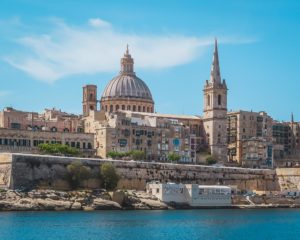
National Library of Malta: Almost hidden by the cafes in Republic Square, the National Library of Malta (also known as Bibliotheca) is currently the legal deposit and copyright for Malta. The Manoel Theatre Museum portrays a powerful background of the fascinating history of the Manoel Theatre and the Royal Opera House that was destroyed during the Second World War.


Manoel Theatre: The Manoel Theatre was constructed in 1731, but it's still in use today, holding a range of performances by various artists. Elmo: Fort Saint Elmo is an important fortification that stands at the edge of Valletta overseeing the entrances of both Marsamxett Harbour and the Grand Harbour. James Cavalier is a 16th century fort, which nowadays hosts a small theatre, a cinema, a cafe, music room and galleries.įort St. It has over 50 rooms and a collection of furniture, silver artefacts and paintings. John.Ĭasa Rocca Piccola:A privately owned home that offers an insight about the Maltese nobility over the last 400 years. The Palace Armoury:The Palace Armoury presents an impressive collection of armoury dating back to times of the Knights of St. It has splendid rooms and a fine armoury section. The Grandmaster’s Palace & The State Rooms: This palace is located in the heart of Valletta and holds the President’s Office and the Parliament. Palaces and fortifications around Valletta Paul’s Shipwreck:This church is amongst the oldest and the most important churches in Malta, since it holds precious works of art as well as a relic from the spiritual father of the Maltese people, St. John’s Cathedral was built.Ĭollegiate Parish Church of St. It was the religious seat of the Knights until St. Located in Independence Square, it rises above the skyline with a steeple 65 metres high.Ĭhurch of Our Lady of Victory: This small church was the first building to be constructed in Valletta after the Great Siege. Paul: This Cathedral is one of the few Anglican sites present in Malta. John, who enriched this place with the finest artefacts.Īnglican Cathedral of St. It was the religious seat for the Knights of St. John’s Cathedral is a precious jewel from the 16th century located in the heart of Valletta. Lascaris War Rooms: Visit Malta's most well-kept secret from World War Two. Malta Toy Museum: The toy museum displays an impressive collection of toys from the 1950's onwards. Malta National Museum of Fine Arts: This museum has a sizeable collection of paintings and valuable local silverware, statues made of marble, bronze and wood, fine furniture objects and fine majolica pieces. Malta National War Museum: This museum represents the role that Malta had in the World Wars, presenting a collection of memorabilia from the war period. Malta National Museum of Archaeology: This museum displays magnificent items from Malta's prehistory - including ornaments, pottery and tools. Valletta: Things to see and do Interesting and fascinating museums Yet, with plenty of cafes, wine bars, theatres, exhibitions and other cultural events from time to time, Valletta is a living city all year long. Then as the sun sets, Valletta calms down and turns into a magic fortified city where the architecture stands out under the gentle lighting. The city is busy by day, but the Upper & Lower Barrakka Gardens offer a calm spot with incredible views of the Grand Harbour. The streets have a grid-like shape, so one could never really get lost while navigating through this open air museum.

Nowadays, Valletta hosts the National Parliament, the Law Courts, many Government Ministries and Departments, Administrative Offices, museums and plenty of shopping opportunities. In fact, one could say that Valletta is actually a monument donated by the Knights. John’s Cathedral, several auberges that hosted the Knights in their times, the bastions surrounding the city, and several gardens. Valletta boasts many buildings from the 16th century, mostly baroque architecture that was built by the Knights of St. The entire city of Valletta has been declared a UNESCO World Heritage Site. Valletta is named after the French Grandmaster Jean Parisot De La Valette who headed the defence of Malta from the Ottoman invasion in 1565. Valletta has been built on a peninsula in the central eastern part of Malta and has a population of just over 6000 people.

Valletta, Malta's capital city and UNESCO World Heritage site


 0 kommentar(er)
0 kommentar(er)
